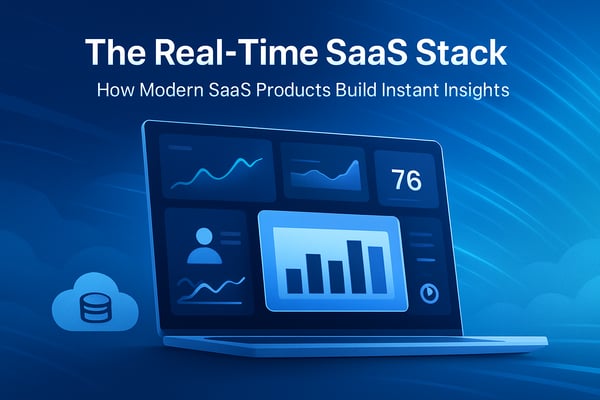The database landscape is moving beyond the limits of traditional transaction processing. Systems once designed solely for consistency and predictable workloads can no longer keep up with the demands of real-time, high-volume, and diverse data environments.
Modern real-time analytics databases, such as CrateDB, represent a new generation of systems built to handle high-velocity, distributed, and heterogeneous data while delivering analytical insights in milliseconds.
This article explores how the architecture, scalability, and operational model of CrateDB differ from traditional databases, and how this shift marks the rise of real-time operational analytics.
Architectural Differences
Traditional relational databases are optimized for OLTP (Online Transaction Processing) handling small, structured transactions with strict ACID guarantees. These systems follow a centralized, row-based storage model, ensuring consistency and integrity but at the cost of scalability and analytical speed. They perform well for individual record updates but are not designed for large-scale data ingestion or complex analytical queries across vast datasets.
CrateDB, by contrast, is built for operational analytics, a class of workloads that blend real-time data ingestion with analytical queries on live data. It leverages a distributed, shared-nothing architecture that scales horizontally across nodes, automatically sharding and replicating data for performance and fault tolerance.
While CrateDB offers atomicity and durability at the statement level, it adopts an eventual consistency model rather than full multi-statement ACID transactions. This design choice enables high availability, massive parallelism, and low latency, allowing users to ingest and analyze data simultaneously across distributed clusters.
By combining row-based ingestion efficiency with columnar storage for analytical queries, CrateDB unifies the speed of operational systems with the depth of analytical insight, eliminating the traditional separation between OLTP and OLAP layers.
In doing so, CrateDB exemplifies the rise of real-time operational analytics where live data is not just stored, but continuously analyzed and acted upon.
Performance and Latency
In traditional architectures, analytical workloads are often delegated to downstream systems such as data warehouses or data lakes. Data moves through ETL pipelines, introducing latency that can range from minutes to hours before insights become available. This delay makes real-time visibility nearly impossible and limits responsiveness to fast-changing conditions.
CrateDB eliminates this bottleneck by making data queryable immediately upon ingestion. Its distributed execution engine and columnar storage format deliver sub-second query performance even across billions of records. Parallel query execution across nodes minimizes response times, while automatic indexing and compression optimize resource utilization.
This architecture allows businesses to analyze time-series, log, or sensor data as it streams in, supporting real-time dashboards, anomaly detection, and predictive analytics without waiting for batch updates.
Data Modeling and Query Flexibility
Traditional databases depend on rigid schemas and limited data types. Adapting them to new data structures often requires downtime or data migration. They also struggle with semi-structured or unstructured data, leading organizations to deploy separate systems -SQL databases for structured data, NoSQL stores for flexible data, and search engines for text analysis.
CrateDB removes this fragmentation. It provides a single SQL interface that can handle structured, semi-structured (JSON), and unstructured data within the same engine.
Users can perform aggregations, joins, full-text searches, and geospatial queries directly in SQL, with automatic indexing that accelerates performance without manual tuning.
This flexibility allows developers, analysts, and AI engineers to work on the same live dataset, simplifying pipelines and drastically reducing time-to-insight.
It is particularly valuable in IoT, manufacturing, smart mobility, and observability environments, where data formats and volumes evolve continuously.
Operational Simplicity and Cost Efficiency
Legacy data stacks often consist of multiple layers (operational databases, ETL jobs, data warehouses, and search engines) all of which must be maintained and synchronized. This complexity introduces latency, increases cost, and heightens the risk of inconsistency across systems.
CrateDB consolidates these capabilities into a single, unified platform.
With automatic sharding, replication, and cluster rebalancing, it adapts dynamically to changing workloads and data growth. Its cloud-native design supports on-premise, hybrid, and fully managed deployments with minimal administrative effort.
The result is a simpler and more cost-efficient architecture: one system for real-time ingestion, analytics, and search, managed through the simplicity of SQL.
Scalability and Cloud-Native Design
Traditional databases scale vertically by upgrading hardware, a strategy that quickly reaches economic and technical limits. Scaling beyond a single machine often requires complex partitioning or sharding that must be managed manually.
CrateDB is designed for horizontal scalability. It distributes both data and queries across nodes, achieving near-linear performance improvements as new nodes are added. The system automatically manages data placement and replication to balance load and maintain resilience.
Its cloud-native architecture integrates seamlessly with Kubernetes and container orchestration frameworks, enabling rolling upgrades, auto-healing, and effortless scaling.
CrateDB can run at the edge, in the cloud, or across hybrid deployments, making it ideal for modern data ecosystems that require flexibility and continuous availability.
Conclusion
The rise of real-time operational analytics marks a decisive evolution in how organizations harness data. Legacy systems remain essential for transaction integrity and long-term storage, but they cannot deliver the agility and immediacy required for real-time decision-making.
Modern databases like CrateDB bridge this gap, combining the scalability of distributed systems, the analytical power of columnar processing, and the ease of SQL.
By supporting continuous ingestion, instant queryability, and integration with AI pipelines, CrateDB represents the rise of real-time operational analytics, turning every data point into an opportunity for immediate, intelligent action. Click here to know more about the product.


